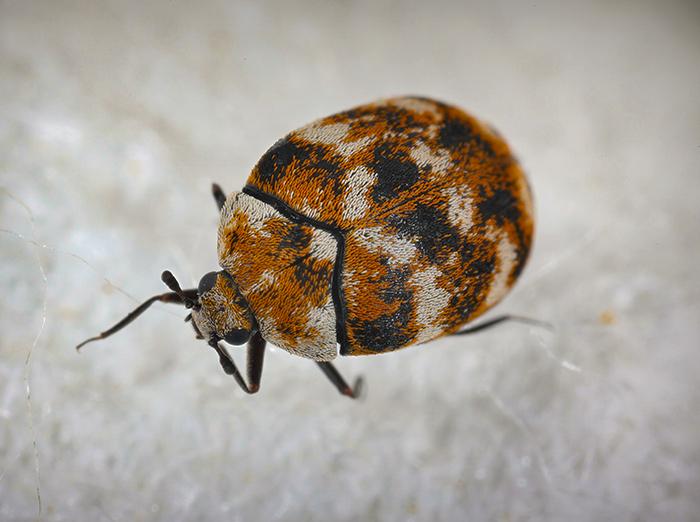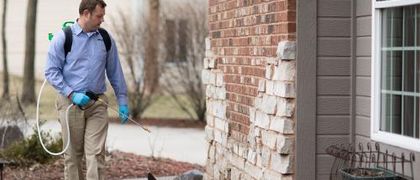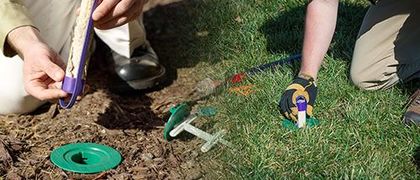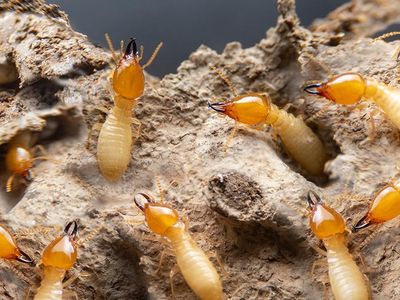What do carpet beetles look like?
- Size: Approximately 1/16 in.
- Color: Shiny black to black centers with white, brown, and yellow mottled pattern, depending on the species
- Body structure: Oval body, six legs, a pair of wings, and antennae

Characteristics of carpet beetles
Female beetles lay about 50-100 eggs on or near vulnerable materials. Within a few weeks, the tiny eggs hatch into larvae that feeds on fabrics. Larvae are about 1/8 to 1/4-inch long, tan to brownish in color, and are covered with dense hairs or bristles.
When are carpet beetles most active?
Where are carpet beetles commonly found?
Outdoors, carpet beetles are often found in wooded areas.
Indoors, these pests are often found around the edges of rugs and carpets as well as near windowsills, drapes, crawling up walls, and under furniture. They are also likely to show up in attics, basements, and closets where clothing and other fabrics are stored.
What do carpet beetles eat?
Adult carpet beetles feed on pollen and nectar. Carpet beetle larvae feed on dander, lint, woolen fabrics, furs, hides, feathers, silk and other animal-based materials.
Are carpet beetles dangerous?
Carpet beetles, while not directly harmful to humans, can cause you a great deal of frustration. If your home has a carpet beetle infestation, you might find small holes chewed in your clothing or other fabrics around your home, like couches or drapes.
Why do I have a carpet beetle problem?
Carpet beetles are attracted to exterior lighting and may slip inside through cracks, gaps, and other openings. It's entirely possible they were carried in on flowers or in boxes of stored belongings.
How do I get rid of carpet beetles?
If you need to know how to get rid of carpet beetles, our team of expert exterminators at Miller Pest & Termite is here to help! Contact us today to find out how we can eliminate your carpet beetle infestation.
How can I prevent a carpet beetle problem?
In order to prevent a carpet beetle infestation from developing, you should regularly clean rugs, drapers, upholstered furniture, closets, and other areas where potential food sources of larvae might be stored. Frequent vacuuming can also help.


Get Help Now!














